
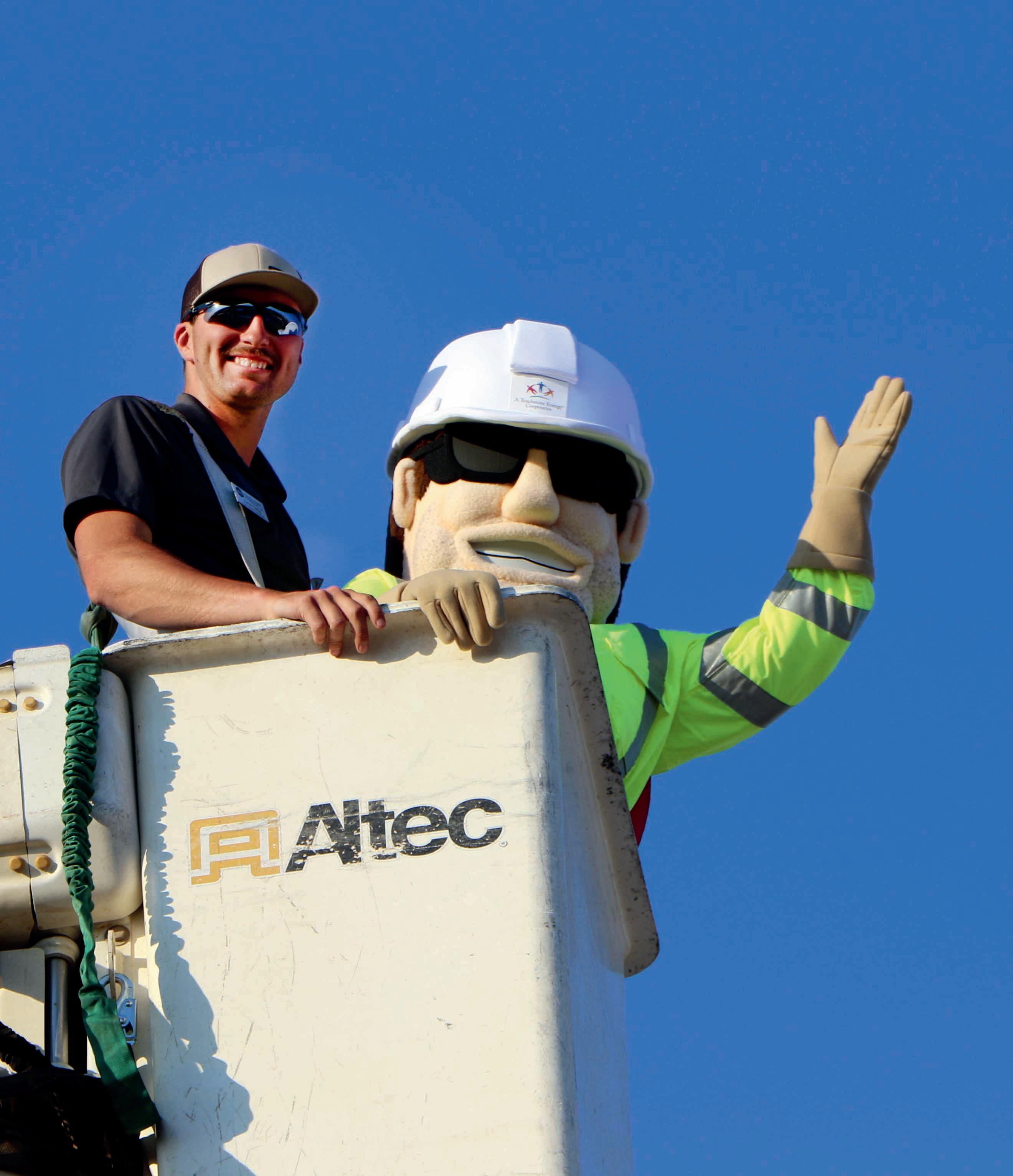



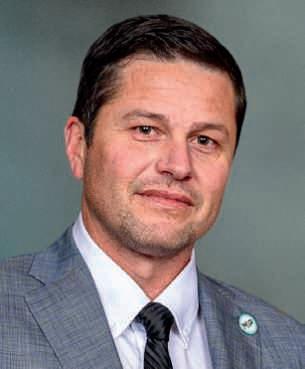
Robert Raker CEO/GM
Every day, countless individuals go about their lives without thinking twice about the electricity that powers their homes, businesses, and communities.
However, behind the seamless flow of power stand the linemen who work tirelessly to ensure we stay connected, even in the most challenging conditions.
Linemen are the backbone to the electrical grid, responsible to installing, maintaining, and repairing the power lines that supply electricity to our homes, businesses, and communities. They restore outages, work with high-voltage equipment and climb utility poles to ensure we stay connected. 9588700
Being a lineman is more than just a job; it’s a calling. It takes years of training and hands-on experiences to become proficient in the trade. Apprentices undergo extensive education programs that combine classroom knowledge with
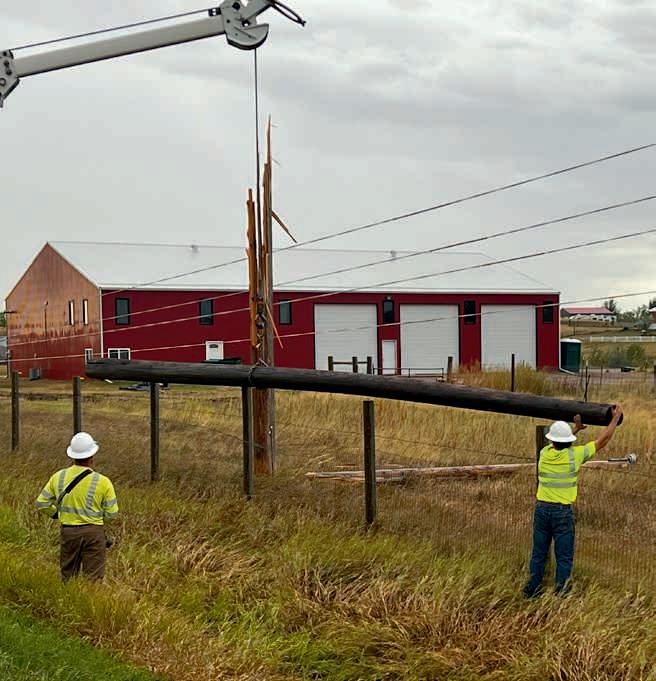
real-world applications. They learn how to work safely with high-voltage electricity, operate heavy equipment, and troubleshoot complex systems. All linemen continuously train to ensure they stay up to date with the latest safety standards and technology. Their work often takes them to remote areas for hours or days at a time.

Linemen often go beyond the technical skills of the job. They have an unwavering commitment to their communities. Many grew up in the communities they now serve. They understand the impor-

tance of their role- not just as linemen but also as neighbors, friends, and family committed to making a difference.
When tornadoes, ice storms, fires, or other natural disasters strike, linemen are among the first responders dedicated to working around the clock, getting life back to normal. Their dedication goes far beyond their work hours. They participate in local events, volunteering in their communities, lending a neighborly hand and mentoring the next generation of linemen and women.
Linemen’s contributions often go unnoticed until the power goes out. That’s why it’s important to take a moment to recognize and appreciate their efforts, not just during emergencies but every day. As we celebrate Linemen Appreciation Day, whether through a simple “thank you” note or by taking the time to learn more about their work, we can all show our gratitude for the men and women who keep us powered.
Linemen are the dedicated individuals who play a vital part in ensuring electricity remains part of our daily lives. The next time you flip the switch to power your day, take a moment to thank the linemen who work behind the scenes to make it all possible.
Robert Raker | CEO

(USPS No. 675-840)
Our Mission:
To serve our members’ best interest.
Our Vision:
We will be a high performing co-op.
Our Values:
1. Safety 2. Accountability
3. Integrity 4. Innovation
5. Commitment to Community
This institution is an equal opportunity provider and employer.
Board President: Andy Moon
Board of Directors
Stan Anders – Vice President
Jamie Lewis – Secretary
Chuck Sloan – Treasurer
Larry Eisenbraun
Peter Blake
Marcia Arneson
Steven Edoff
Sue Peters
CEO and General Manager: Robert Raker –robert.raker@westriver.coop
Editor Amanda Haugen –amanda.haugen@westriver.coop
WEST RIVER ELECTRIC COOPERATIVE CONNECTIONS is the monthly publication for the members of West River Electric Association. Members subscribe to Cooperative Connections as part of their electric cooperative membership for $6 a year. West River Electric Cooperative Connections purpose is to provide reliable, helpful information to electric cooperative members on matters pertaining to rural electrification and better living. Nonmember subscriptions are available for $12 per year. Periodicals Postage paid at Wall, S.D., and at additional mailing offices. Postmaster: Send address changes to West River Electric Cooperative Connections, PO Box 412 , Wall, SD 57790-0412.
Other correspondence to: West River Electric Cooperative Connections, 3250 E Hwy 44, Rapid City, SD 57703; telephone (605)393-1500, Exts. 6564, 6531 or 6522; fax (605)393- 0275; e-mail amanda.haugen@westriver.coop.
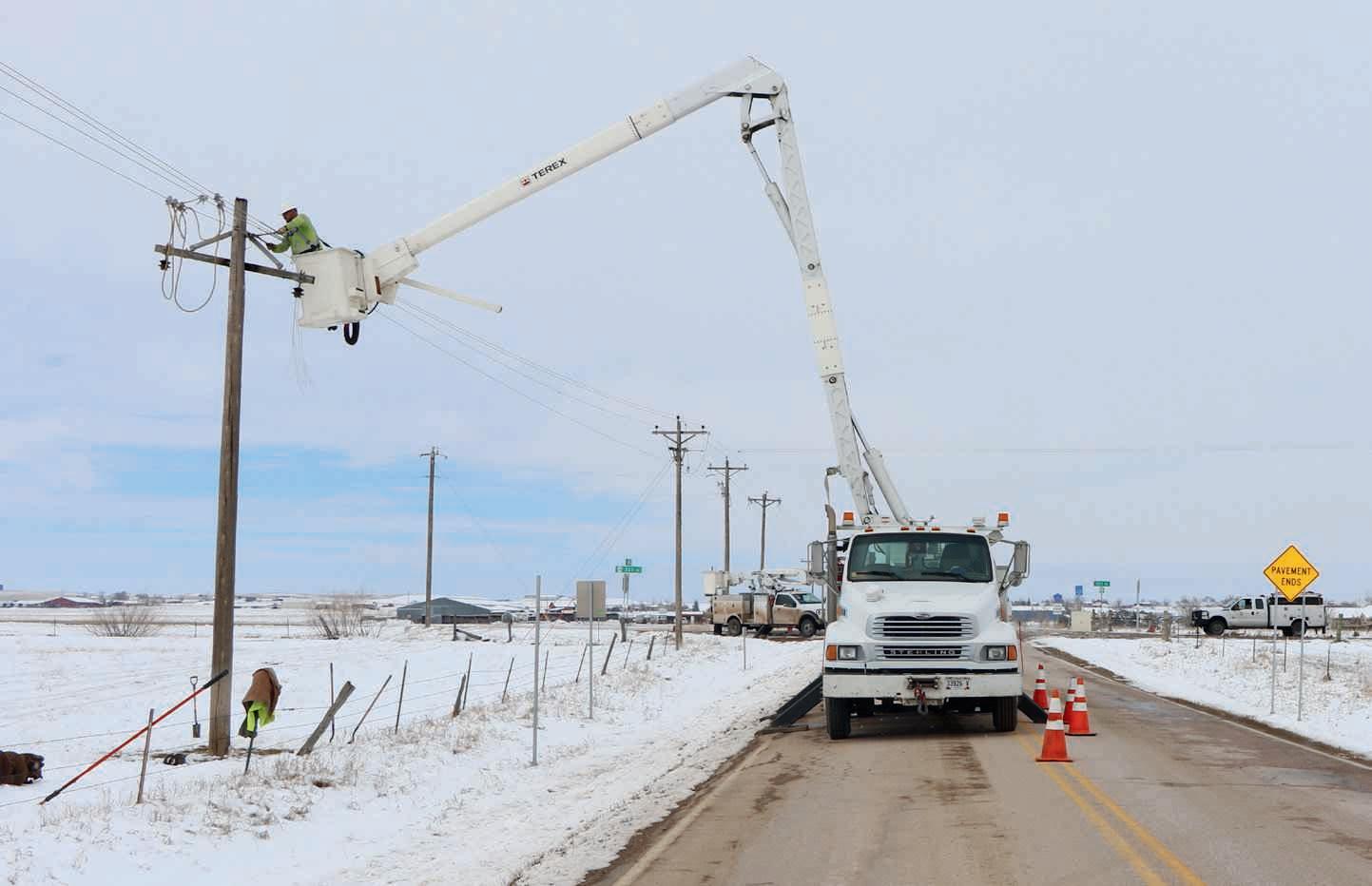
National Work Zone Awareness Week, April 21-25, 2025, is a good time to learn more about work zone safety.

Mike Letcher Manager of Operations
Electric Cooperatives play an essential role in providing electricity to rural communities across the United States. Streets and highways are lined with electrical poles and equipment which often requires crews, like West River Electric’s, to place their equipment and trucks in or near traffic lanes. 4956800
Cars or trucks that speed through a work zone not only endanger workers on the ground, but also those up in the raised bucket. Driving too fast or too close to a work truck can cause the elevated worker’s bucket to move or sway.
We at West River Electric encourage you to stay informed about work zones in your area and to take precautions when driving near them. This includes following posted speed limits, avoiding distractions, and being prepared for sudden stops or changes in traffic patterns. We also want to emphasize the importance of slowing down and being
cautious when driving through work zones to prevent accidents and ensure the safety of our workers and the public.
Work Zone Awareness Week recognizes the importance of work zone safety and actively reminds the public to be cautious when driving through work zones and help ensure the safety of the workers and the community. Let us all be mindful of work zones and observe work zone safety 365 days a year to ensure road safety.
1. Merge early and be courteous of other drivers
2. Go slow and be patient. Traffic delays are sometimes unavoidable.
3. Keep a safe distance between your vehicle and traffic barriers, trucks, equipment, and workers.
4. Obey all signs and road crew flag instructions.
5. Minimize all distractions. Avoid texting, operating the radio, eating, or digging in the backseat for something.
Distracted driving is any activity that diverts attention from driving, including talking or texting on your phone, eating and drinking, talking to people in your vehicle, fiddling with the stereo, entertainment or navigation system – anything that takes your attention away from the task of safe driving.
Texting is the most alarming distraction. Sending or reading a text takes your eyes off the road for five seconds. At 55 mph, that’s like driving the length of an entire football field with your eyes closed.
You cannot drive safely unless the task of driving has your full attention. Any non-driving activity you engage in is a potential distraction and increases your risk of crashing.
Consequences
Using a cell phone while driving creates enormous potential for deaths and injuries on U.S. roads. In 2022, 3,308 people were killed in motor vehicle crashes involving distracted drivers.
Get Involved
We can all play a part in the fight to save lives by ending distracted driving.
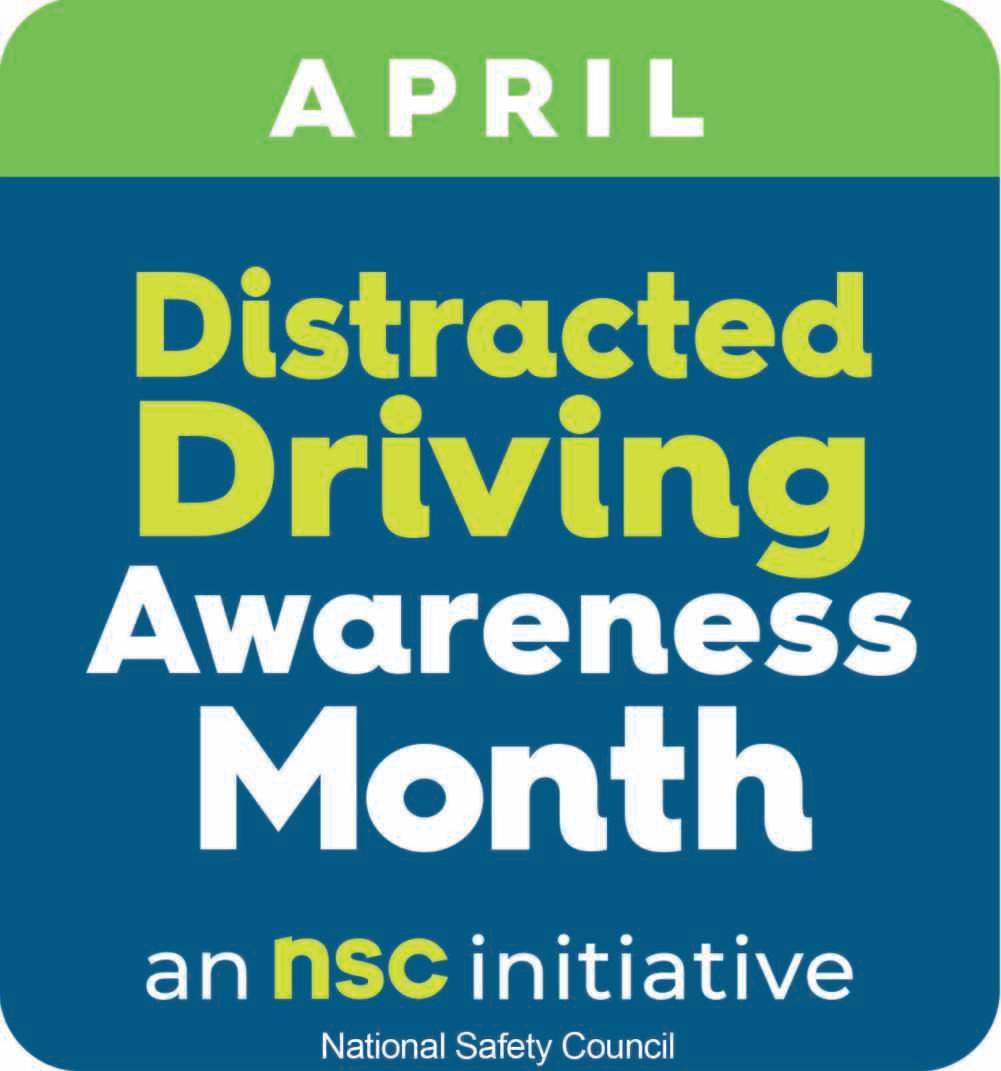
Teens can be the best messengers with their peers, so we encourage them to speak up when they see a friend driving while distracted, to have their friends sign a pledge to never drive distracted, to become involved in their local Students Against Destructive Decisions chapter, and to share messages on social media that remind their friends, family and neighbors not to make the deadly choice to drive distracted.
Parents first must lead by example – by never driving distracted – as well as have a talk with their young driver about distraction and all of the responsibilities that come with driving. Have everyone in the family sign the pledge to commit to distraction-free driving. Remind your teen driver that in states with graduated driver licensing (GDL), a violation of distracted-driving laws could mean a delayed or suspended license.
Educators and Employers
Educators and employers can play a part, too. Spread the word at your school or workplace about the dangers of distracted driving. Ask your students to commit to distraction-free driving or set a company policy on distracted driving.

“Do not climb trees near power lines.”
Naomi cautions readers about the dangers of climbing trees near power lines. Thank you for your picture, Naomi! Naomi’s parents are Andrew and Andrea Krcil, members of Charles Mix Electric Association.
Kids, send your drawing with an electrical safety tip to your local electric cooperative (address found on Page 3). If your poster is published, you’ll receive a prize. All entries must include your name, age, mailing address and the names of your parents. Colored drawings are encouraged.

EASY BREAKFAST MUFFIN
Ingredients:
2 cups all-purpose flour
1/2 cup granulated sugar
2 tsps. baking powder
1/2 tsp. salt
2 eggs (beaten)
1/2 cup vegetable oil
1/2 cup milk
Method
Preheat the oven to 400°F. Line a 12 cup muffin tin with paper liners or spray each cup with cooking spray. In a mixing bowl, combine flour, sugar, baking powder and salt.
Add in eggs, oil and milk and mix only until combined, don’t beat or over mix or they will be dry! Fold in 1/2 cup mix-ins if desired.
Scoop into prepared muffin tin and bake for 15 to 18 minutes or just until golden and a toothpick comes clean. Serve with butter and jam.
Lyon-Lincoln Electric Member
UMM BRUNCH
Ingredients:
Scallops English Muffin Eggs
Method
Soak scallops in cold water in fridge for two hours, pat dry, sauté in butter and garlic until opaque (approx. 4 min). Put on toasted English muffin. Cook poached eggs in 10-inch skillet with 1 tbsp. vinegar (3-5 mins.) Remove with slotted spoon and drain on paper towel. Add to the scallops and top with Hollandaise Sauce.
Hollandaise Sauce:
Cut 1/2 stick butter into thirds. In double boiler, combine 1 piece of butter and 3 egg yolks, 1 tbsp. lemon juice and 1 tbsp. water. Place it over boiling water and cook while whisking rapidly. Add remaining butter one at a time, continue to cook. Add salt and pepper to taste.
Kari Reder Northern Electric Member
SAUSAGE AND EGG TACOS
Ingredients:
4 oz. breakfast sausage, casings removed
1 tbsp. perfect pinch roasted garlic bell pepper seasoning
6 eggs
2 tbsps. milk
1 tbsp. butter
6 small flour tortillas, warmed 1/4 cup shredded Mexican cheese blend
1 med. ripe avocado, peeled, pitted and sliced
Method
Heat medium skillet on medium-high heat. Add sausage and Seasoning; cook and stir until sausage is browned and crumbled. Remove sausage from pan; keep warm. Drain fat from pan.
Beat eggs and milk in medium bowl with wire whisk. Melt butter in same skillet on medium heat. Add egg mixture; cook and stir until eggs are firm.
For each taco, place one tortilla on plate. Top with eggs, sausage, cheese and avocado. Sprinkle with additional seasoning, if desired.


Jenny Patterson Manager of Office Services
Each member who was on service in 2024 will receive a capital credit allocation notice (see example on right) in the mail during April. West River Electric is a not-for-profit organization owned by you, its member-owners. The revenue that covers day-to-day operating costs of the cooperative comes directly from members paying their monthly electric bills. Member rates provide:
• A sufficient amount of revenue to cover all operating costs,
• Funds for capital requirements, such as trucks, equipment and other items not funded by the RUS loans,
• Sufficient income to meet our financial needs set by our lenders,
• Revenue for additional capital items to keep pace with growth.
Revenue over the amount needed to keep the co-op operating is called a “margin.” These margins are allocated in the spring of each year based on the amount of electricity you have used for the previous year, (your patronage), and are called “capital credits.” The allocation notice you receive will state your balance before the 2023 allocation. In the middle, it shows the amount that has been
credited to your capital credit amount for the year 2024 for each service location you have on service. In the end, it will show your total capital credits allocated to date. These capital credits provide equity for the co-op and you. As a reminder, this allocation notice cannot be cashed, nor can it be used as a credit on your energy account.
On the notice, you will notice line items listed as “COOP” & “G&T.” The “COOP” line is for the margins derived strictly from West River Electric. The “G&T” line is for the margins that have been allocated by our power suppliers, Rushmore Electric Power Cooperative and Basin Electric Power Cooperative, (BEPC) of which we, West River Electric, are members. 9619400
Each year, the Board of Directors review the financial condition of West River Electric to determine if a capital credit, “retirement,” (payment of capital credits) will be possible for the year. If one is approved, you will find this information in the October edition of the Cooperative Connections. If you have further questions, please contact our offices at, Wall: 605.279.2135, or Rapid: 605.393.1500, or by email at info@westriver.coop.

Explanation of numbers
1. Member’s account number.
2. Total previous years amount.
3. Explanation of what it means to be a member of the cooperative and how capital credits work.
4. Current year allocation break down:
a. Location: the number we assigned to your home location
b. Patronage: total of all electric bills paid in 2024
c. COOP & G&T: type of allocation
d. Capital Credit: amount of each allocation
5. Total credits accrued for 2024.
6. The new balance of your totals after this year’s allocation.

Frank Turner frank.turner@sdrea.coop
April marks Lineman Appreciation Month, the perfect time to spotlight the essential role that electric cooperative employees play in their communities. In line with their commitment to education and community involvement, electric cooperatives are celebrating lineworkers through youth engagement initiatives, and it all stems from one of the electric cooperatives’ seven cooperative principles: concern for community. For years, programs such as Cooperatives in the Classroom have provided schoolchildren with innovative, hands-on learning opportunities, demonstrating the critical work electric cooperatives perform in their communities.
Whether it’s engaging youth through a Neon Leon safety demonstration or taking students to explore Basin Electric’s energy infrastructure during the SDREA Youth Excursion, electric cooperatives across the state are constantly finding new and exciting ways to engage the youth within their communities and inspire the next generation. Below are two new avenues for spurring youth engagement in cooperatives across the state:
Megawatt Mascot
Is it a bird? Is it a plane? No, it’s Megawatt, Rushmore Electric Power Cooperative’s newest lineman mascot. This summer, select electric cooperatives in western South Dakota are suiting up to introduce Megawatt – a friendly-faced lineman adorned with a hard hat, safety gloves and
bright red cape – to their members.
“The goal is to get younger kids to start thinking about linemen in a certain way – almost larger than life and the backbone of the electric cooperative,” said Rushmore Electric Chief Marketing Officer Matt Brunner. “The hope is that it translates into them considering the lineman profession when they get older.”
Megawatt has already made his debut at several member appreciation events, bringing high-energy fun to parades and tailgates as a true champion of the cooperative spirit. So far, Brunner said the mascot has left a big impression.
“The kids and adults have loved it, and the interactions have been great,” Brunner said. “If nothing else, it’s unique. People are constantly asking, ‘Who is that?’ The costume does a great job of starting the conversation: what is a lineman, and what do they do?”
Beyond lineworkers, cooperatives offer a diverse range of career paths.
From engineers to accountants, the cooperative world is full of exciting roles that include opportunities in communications, where professionals share the cooperative’s achievements and member services, where employees work directly with the community to meet their needs.
Brunner said he expects the idea to continue gaining momentum over the coming months with new avenues of appreciation for linemen and a better understanding of the day in the life of a lineman, as well as other exciting careers in the electric cooperative industry.
Jennifer Gross, education and outreach coordinator at East River Electric Power Cooperative, has inspired classrooms for years with a variety of engaging demonstrations, covering everything from science to safety. Last year, Gross introduced a new activity to spark curiosity while incorporating STEM – an approach to education that integrates science, technology, engineering and mathematics into learning. The result led to a crafting activity where kids use simple materials to fashion their own wind turbine.
“We are always trying to come up with new ideas for students,” Gross said. “Incorporating STEM into this project seemed like a natural fit because both teachers and students are very receptive to it.”
The idea is straightforward. Students construct a small-scale turbine from wooden dowels, fins, and a motor capable of generating power. Once completed, they connect their tiny turbine to a multimeter, which measures the energy generated. Instead of relying on natural wind, students use a fan to simulate a windy day. By altering their model turbines, students can find the optimal design for the best output of energy. And just like that, students can step into the role of engineers.
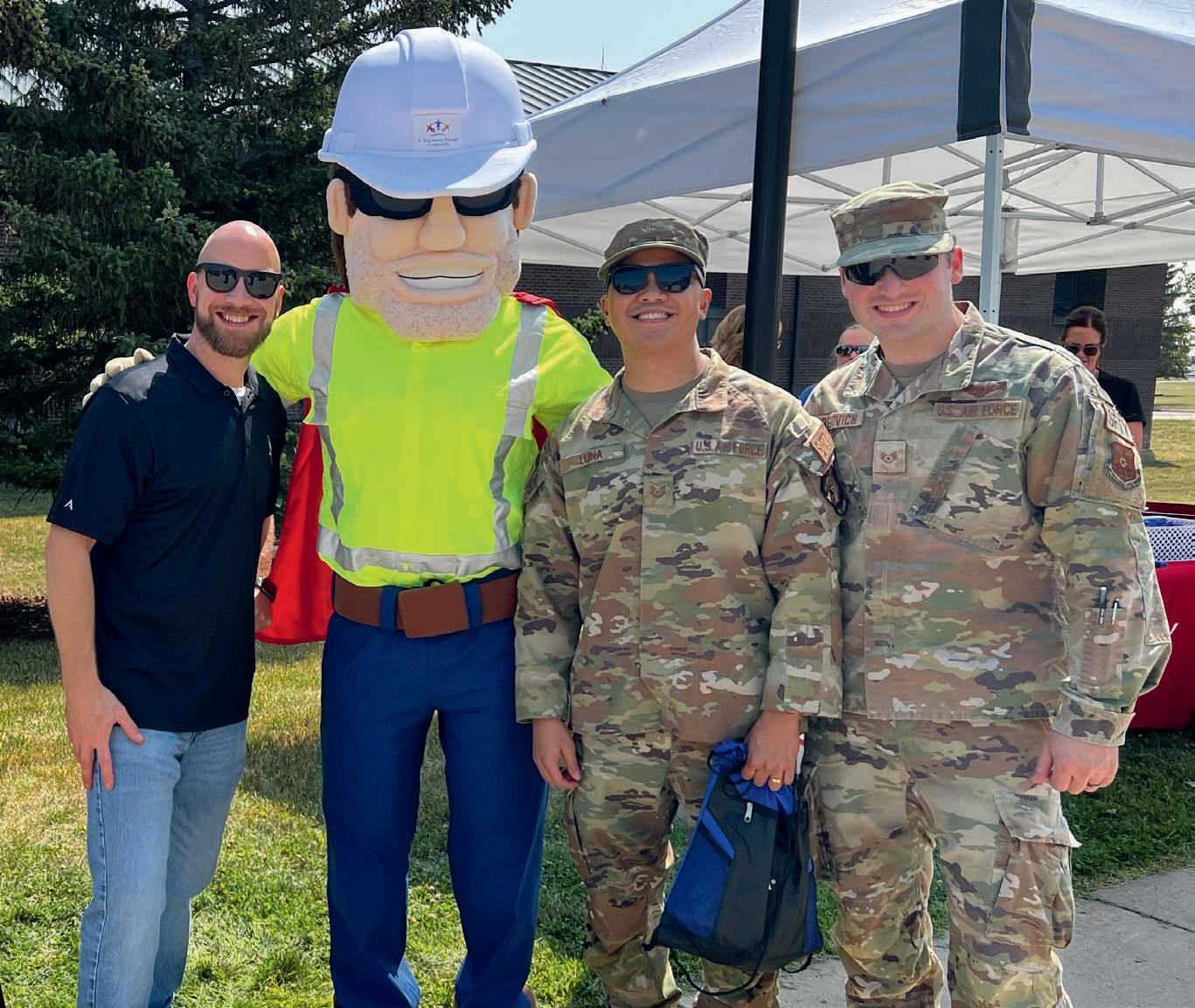
Gross said the students and the project have a lot in common. Once the building begins, the students’ minds begin to whirl – just like a turbine. The activity prompts question after question: Why does the wind blow? How does a wind turbine work? How does the shape and weight of the blade influence the experiment?
“The students enjoy being engineers for this project,” Gross said. “They enjoy having the freedom to choose their materials and design. There’s no right or wrong way to do it, and they enjoy that. I mention to the students that careers in wind energy are in high demand and some are 4-year degrees and others are fewer years, but the push for renewable energy sources is growing and our state produces plenty of wind.”
Whether it’s through a hands-on activity or an engaging mascot, cooperatives aim to not only educate but inspire, ensuring that today’s students can become tomorrow’s linemen, engineers, communicators or member service representatives. By
sparking curiosity and introducing young people to the world of cooperatives early on, they’re opening the door to careers that keep communities powered and connected.
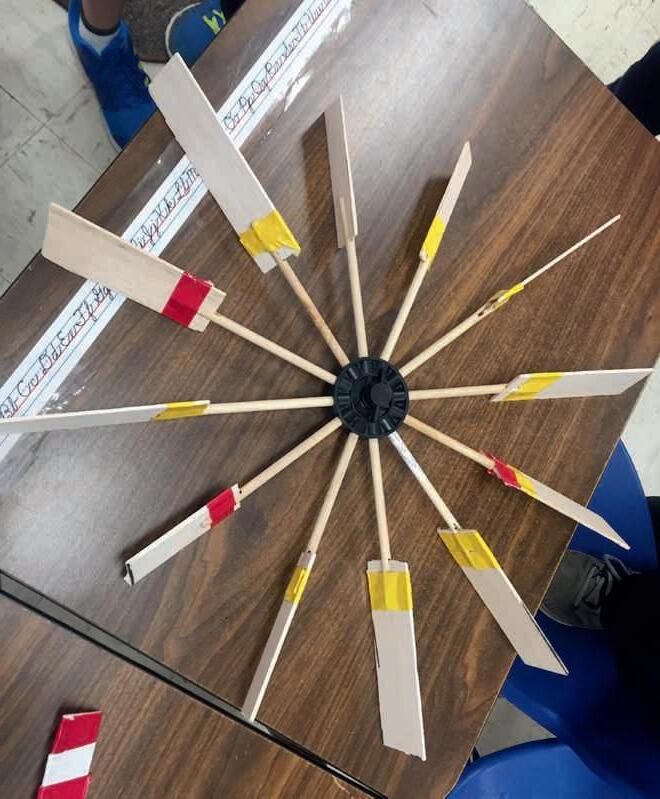

Amanda Haugen Communications Specialist
Administrative Professionals
Day is an annual celebration held on the last Wednesday of April to recognize and appreciate the hard work and dedication of administrative professionals in the workplace.
The day was first observed in 1952 as National Secretaries Week and later expanded to include all administrative professionals. The day is now recognized in many countries around the world and is an opportunity for employers to show their gratitude to the unsung heroes who help to keep the wheels of the organization turning smoothly. At West River Electric, these men and women play an important part in bringing power to your home or business.
We have professionals who answer the phones, take payments, and work with members to set up work orders to bring the power lines to their homes or businesses. We have professionals

who process payments, review billing reports, setup and close service orders, order poles and wire, obtain easements to run lines, accounts payable, and IT professionals who keep our computers and network up and running smoothly. We couldn’t operate without all of the professionals listed above, and the many others that are a part of the organization.
In Western South Dakota and across the country, electric cooperative Administrative Professionals’ mission of helping others often extends beyond their commitment to their work at the co-op. West River Electric’s employees are in the community, volunteering on the local ambulance or fire departments, working with the youth, and serving on local advisory boards, to name a few. 9843301
Wednesday, April 23rd is Administrative Professionals Day. Given the dedication of West River Electric Administrative Professionals, please take a minute to say ‘Thank You’ for all they do for the community they serve.




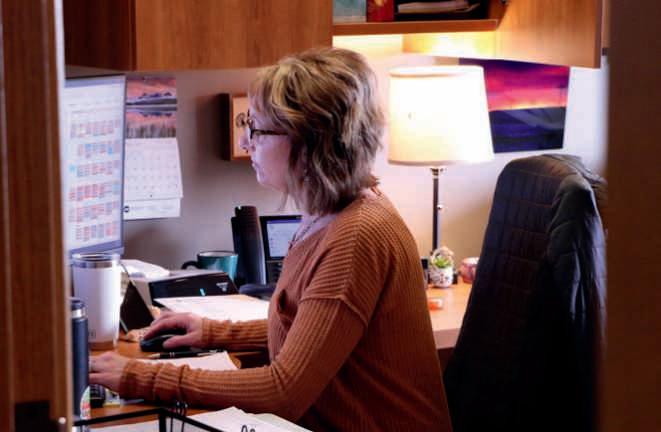
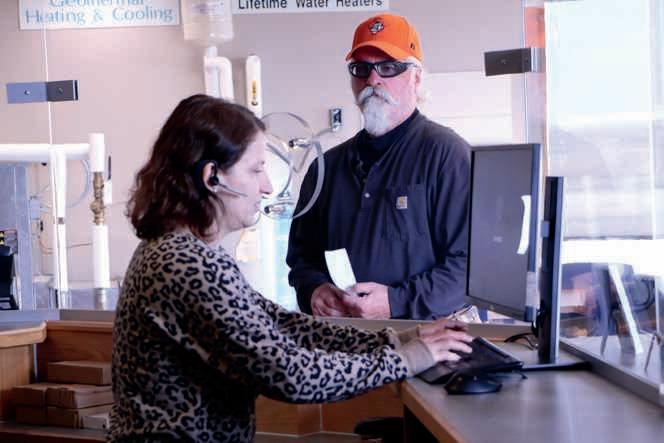
Amanda Haugen Communications Specialist
Calling all high school freshmen, sophomores, and juniors! Is your parent or guardian an active member-owner of West River Electric? If so, you’re eligible to apply for an unforgettable summer experience: Youth Excursion 2025!
If chosen, you will receive an all-expenses-paid trip to Bismarck, N.D., for a youth event unlike any other. From July 21-23, participants will stay on-campus at Bismarck State College. During this time, they will have the opportunity to sightsee, make friends from all across the state and gain a new understanding of where their electrical power comes from.
Once participants arrive on the campus, they can look forward to building friendships, taking in the sights of North Dakota’s capitol and learning “The Story Behind the Light Switch.” During their stay, students will get to hear from power industry experts and participate in hands-on activities. Students will be given the opportunity to tour the Great Plains Synfuel Plant, Freedom Coal Mine and Antelope Valley Station Power Plant to see where South Dakota’s power is generated.
There will also be plenty of time built in for recreation and socializing – students will play games, visit local attractions and much more. Participants can look forward to connecting with students from all across South Dakota, building strong friendships and learning from their peers.
To be eligible for Youth Excursion, students must be in high school and their parent or guardian must be an active member-owner of West River Electric.
To apply, scan the QR code on the flyer, or visit https://www.westriver.coop/youth-excursion-2025 for more information and to fill out an application!
For questions, please contact:
Amanda Haugen
Amanda.haugen@westriver.coop 605-393-1500
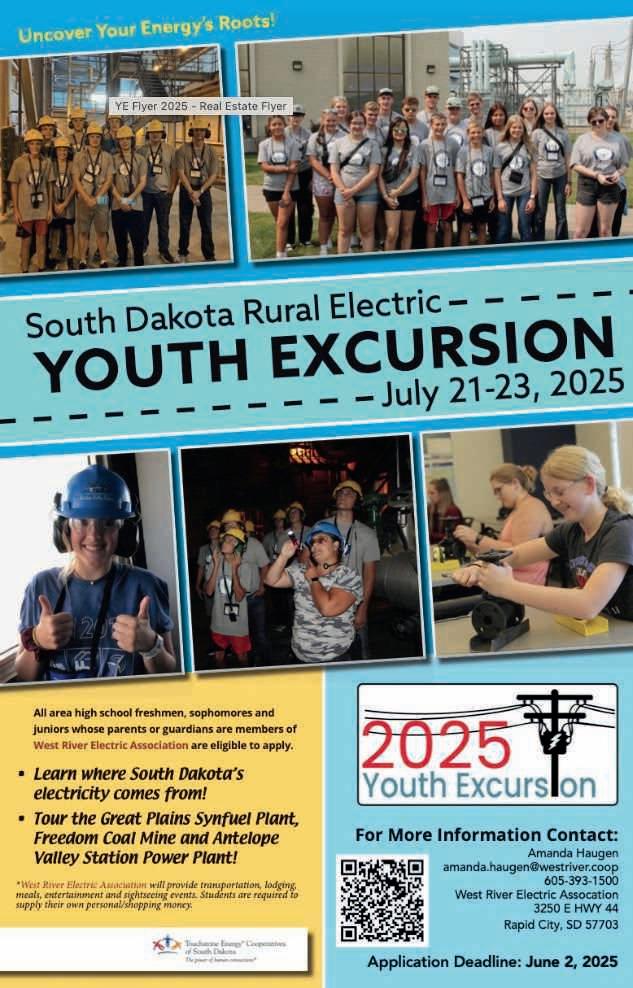
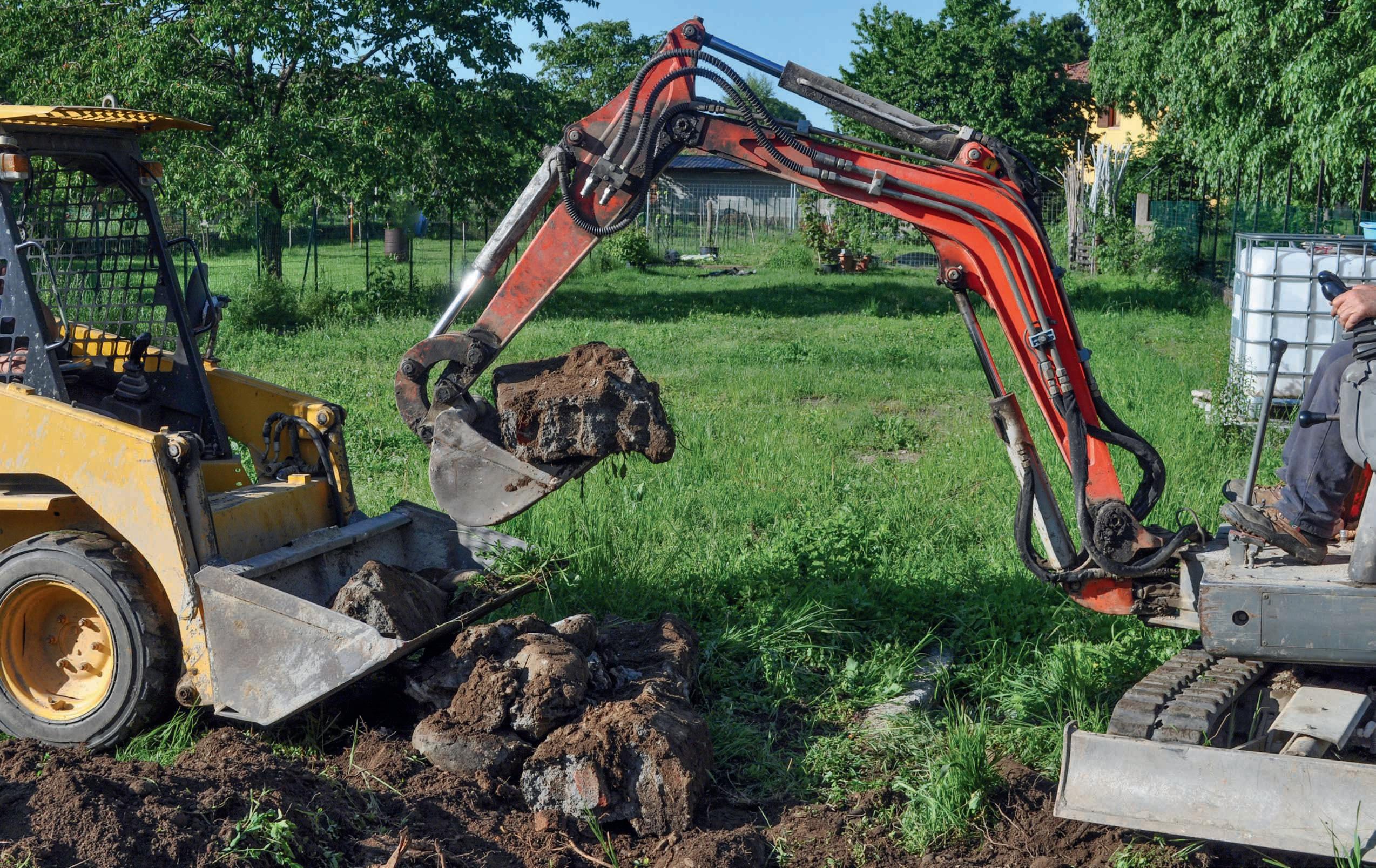
Jocelyn Johnson jocelyn.johnson@sdrea.coop
Every year, underground utility lines are damaged by homeowners and contractors who dig without calling 811. This single call is a crucial step in any project. Striking a water, gas or power line can cause serious injuries, costly repairs and service outages for an entire neighborhood. Whether you’re beginning construction on a major project or are simply planting a tree, calling 811 before you dig is a free and simple solution to what could potentially be considerable damage. What is 811?
The South Dakota One-Call System, or 811, is a mandatory statewide
one-call notification system that was established by South Dakota Statute in 1993. 811 is now recognized as the national “Call Before You Dig” number in the U.S., designed to safeguard people and protect underground utilities. It’s a free service that coordinates with your utility providers to help locate and mark underground lines.
Codi Gregg, executive director for South Dakota 811, said, “The main purpose of the program is to avoid digging into any utility and potentially causing a loss of life, loss of property, or any infrastructure buried in the ground.”
“We are fully funded by the utilities who want to protect the services they provide,” Gregg continued. “It is

South Dakota state law that you contact 811 two business days before you dig.”
South Dakota has underground utility lines for electricity, gas, water, sewage and telecommunications. Inadvertently hitting one of these lines could cause power outages, property damage, water contamination, gas leaks, legal liabilities and injury.
Gregg explained that when an excavator makes the 811 call before they dig, utilities receive the locate and have 48 hours to mark all lines in the designated area with colorcoded flags or paint.
“If you happen to dig into a utility or find one that was not located while excavating, you have to report that to 811. If you happen to dig into a gas line or anything toxic, you must call 911 first, then 811.”
Contractors, homeowners, ranchers and farmers can easily make a request for underground utility lines to be marked by
Contractor Hits Unmarked Secondary Line
Tom Lundberg, member services manager from H-D Electric Cooperative in Clear Lake, S.D., gives the following account of a contact made to a secondary line:
“Normal situations start out like this – South Dakota 811 calls are made from an excavator or member (persons doing the work), and flags and paint go on the ground marking the underground services. This is a normal occurrence. However, some digs are more complicated, and there may be what we call secondary wires, pipes, sewer lines, etc. located in the dig area as well. The words primary and secondary are confusing to some people and they assume that all is well after the 811 call is made. Primary lines are owned and operated by the utility. Secondary lines are member-owned lines that are not marked by any utility. They must be marked by the memberowner of the property.
Unfortunately, we have had many of these lines hit during a dig, which makes it an emergency service call. One example is when we had a 600-amp service for a member that was damaged by a contractor. The call came in to us, and we responded to the site. We realized it could have been a very dangerous situation if the contractor would have entered the dig. Luckily, they guarded the hole until we arrived. The underground wires were extremely damaged, and the contact did not take out the transformer fuse or any kind of overcurrent protection. When I arrived, there was water in the hole, and I could hear the muddy water boiling. At that time, I assumed it was still energized. The first thing I did was turn the power off and assess the extent of the damage. The mud and water were so hot that I had to wait for a while for it to cool off. Repairs were made and everything was put back together. I double checked my work, then turned the power back on. This happened because secondary locates were not completed – resulting
following these steps before every project.
1. Call 811 or submit an online request at least 48 hours prior to your project.
• Information can be found online at www.sdonecall.com.
2. Wait for utility markings.
• Utility companies will send professionals to mark buried lines using color-coded paint or flags.
3. Get locates on secondary or privately-owned lines if needed.
4. Check markings.
• Confirm all utility companies listed on your ticket have responded to the request after the two-business days have passed.
5. Dig safely.
in a three-hour delay for the business and a costly repair.
We have had many of these calls over the years, and we want to communicate that anyone digging for a project must ensure all the dig area is marked for primary and secondary functions (wire, pipe, gas, telephone, sewer).
Long story short, the impact of not marking all the dig area can cost you time, loss of production, money and even worse – injury or death.”
Out-of-State Contractor Hits Underground Power Line
Mike Stadler, manager of electric operations from Grand Electric Cooperative in Bison, S.D., gives the following account of a contact made by company digging gravel:
“We had a dig-in a couple of years ago at a gravel pit. The county contracted a crushing company out of state to mine more gravel from an existing pit they had rights to. The crushing company started by digging test holes with a bulldozer. They would take the bulldozer and dig a hole about eight feet deep, just one dozer width wide, to see how good the gravel was before they committed to mining the whole area. We had underground cable around the pit. When they were exploring new areas to mine, they dug right through our cable and didn’t know it (keep in mind the test holes are 8 feet deep, and our cable is four feet deep). They dug the hole, went in and looked at the gravel, decided it wasn’t worth it, and covered the hole back up. Meanwhile, we had an outage.
When our crew began searching for the cause of the outage, they discovered the fresh dirt which was moved and had to dig it back up to fix it. When I asked the contractor why he didn’t call a locate, he stated the county superintendent said he didn’t have to because there was nothing there. They were very reluctant to pay the bill and thought the county should be liable. When I explained to them it was the law that all contractors are required to call 811, and it didn’t matter what the county told them, they paid the bill. We have since educated the county on 811 laws.”
SHINING THE LIGHT ON WEST RIVER ELECTRICS DEDICATED EMPLOYEES I

HOW LONG HAVE YOU BEEN WORKING WITH WEST RIVER ELECTRIC?
WHAT DOES YOUR JOB ENTAIL?
MANAGER OF IT
S e r v e r u p d a t e s . M a k i n g s u r e e m p l o y e e s c a n d o t h e i r j o b s o t h e l i g h t s
s t a y o n a n d m e m b e r s n e e d s a r e m e t !
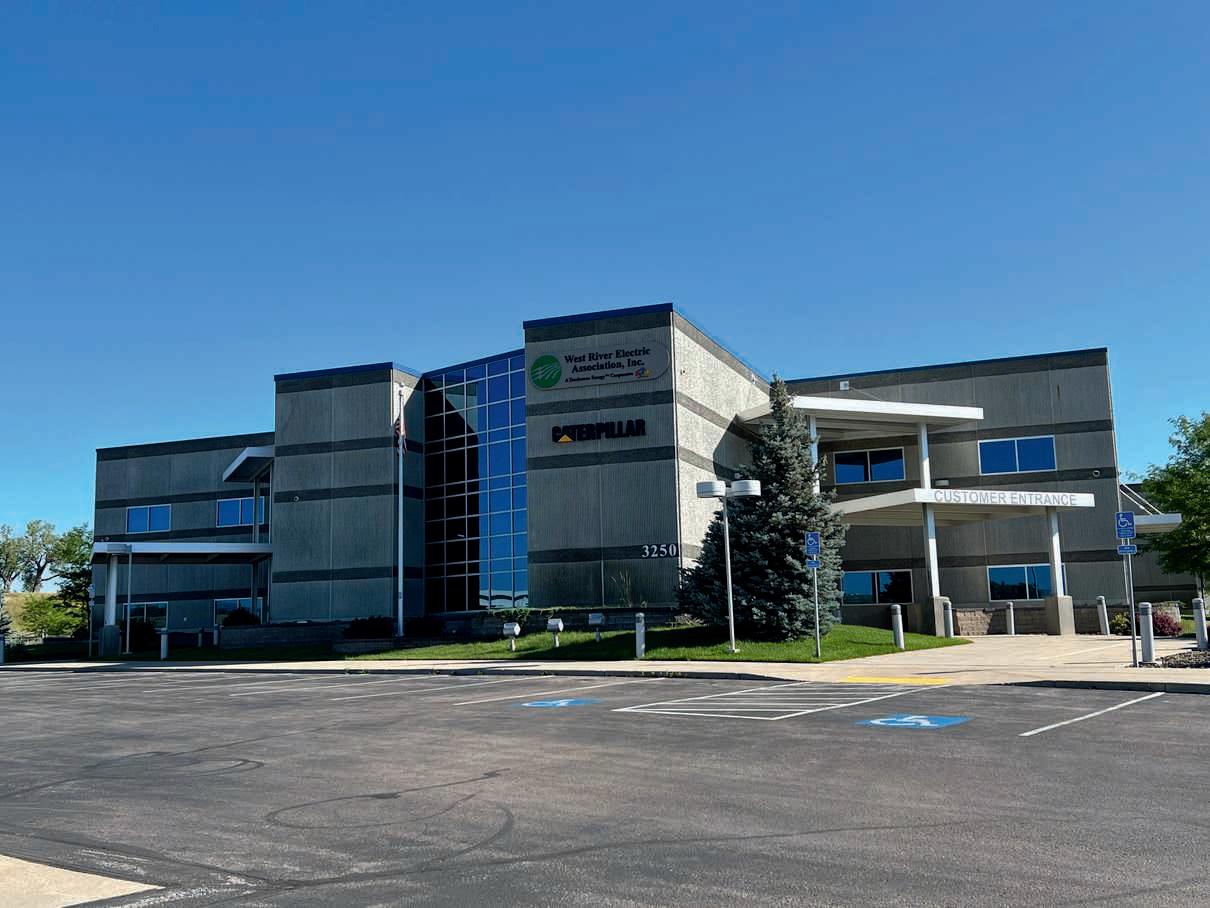
WHAT DO YOU LOVE MOST ABOUT WEST RIVER ELECTRIC?
N o m a t t e r w h a t i s g o i n g
s r a l l y t o g e t h e r !
WHAT IS YOUR FAVORITE MEMORY SINCE STARTING WORK AT WEST RIVER ELECTRIC?
HOW WOULD YOU DESCRIBE WEST RIVER ELECTRIC IN THREE WORDS? C o n s i s t e n t , g r o w i n g , s o l
WHAT MOTIVATES YOU TO GET UP AND GO TO WORK EVERY DAY? A

BILLING SUPPORT SPECIALIST
HOW LONG HAVE YOU BEEN WORKING WITH WEST RIVER ELECTRIC? I
WHAT DOES YOUR JOB ENTAIL?
There are so many that come to mind, it’s hard to pick just one. ELECTRIC? E
WHAT DO YOU LOVE MOST ABOUT WEST RIVER ELECTRIC?
h e r e . I a m g r a t e f u l t o w o r k w i t h s o m e a w e s o m e p e o p l e .
WHAT IS YOUR FAVORITE MEMORY SINCE STARTING WORK AT WEST RIVER
i t h b i l l i n g q u e s t i o n s w h e t h e r t h e y c a l l i n o r s t o p b y t h e o f f i c e . W h a t I l o v e m o s t a b o u t W R E A i s t h a t i t r e a l l y f e e l s l i k e f a m i l y a g r e a t c u l t u r e .
HOW WOULD YOU DESCRIBE WEST RIVER ELECTRIC IN THREE WORDS?
S a f e . R e l i a b l e . C o m m u n i t y .
WHAT MOTIVATES YOU TO GET UP AND GO TO WORK EVERY DAY?
M y f a m i l y a n d k n o w i n g t h a t I c o m e t o w o r k e v e r y d a y t o d o a j o b t h a t I l o v e .

If you locate your account number anywhere in this issue of West River Electric’s Cooperative Connections, you will be a winner. There will be five account numbers placed randomly throughout the publication. If you spot your account number and notify our office before the 10th of the next month, you will receive a $10 credit on your next bill.
3250 E Hwy 44, Rapid City, SD
Monday-Friday 7 a.m. to 5 p.m.
605-393-1500
1200 W 4th Ave, Wall, SD
Monday-Friday 7 a.m. to 5 p.m.
605-279-2135
A night depository is available at both offices for your convenience.
Contact 605-279-2135 or 605-393-1500 during office hours. E-mail us at info@westriver.coop for questions on your account.
Contact 605-279-2135 or 605-393-1500 in the event of an outage or other emergency. Our calls are answered 24/7.
APRIL 11-12
Forks, Corks & Kegs
Food, Wine & Beer Festival Deadwood, SD
605-578-1876

APRIL 3
Viva Las Vegas McCrossan Banquet Auction 5:30 p.m.
Sioux Falls Arena Single Ticket $100 Tables Available Sioux Falls, SD 605-339-1203
APRIL 3
To have your event listed on this page, send complete information, including date, event, place and contact to your local electric cooperative. Include your name, address and daytime telephone number. Information must be submitted at least eight weeks prior to your event. Please call ahead to confirm date, time and location of event.
Bachelors of Broadway: Gentlemen of the Theatre 7 p.m. NSU Johnson Fine Arts Center aberdeencommunityconcerts.org
APRIL 4
Mitchell Technical College 2025 Alumni Gathering Cornhole Tournament 5 p.m. Social 6:30 p.m. Tournament The World’s Only Corn Palace Mitchell, SD 605-995-7342
APRIL 4-5
Annual Schmeckfest German Heritage Celebration 748 S Main St. Freeman, SD 605-925-4237
APRIL 4-6, 11-13
Women Playing Hamlet
April 4-5, 11-12: 7:30 p.m.
April 6, 13: 2:30 p.m. Mighty Corson Art Players Corson, SD www.mightycorson.com
APRIL 5-6
Youth & Family Kids Fair Sat. 8:30 a.m.-4 p.m. Sun. 12-4p.m. The Monument Rapid City, SD 605-342-4195
APRIL 11-12
Junkin’ Market Days Spring Market Fri. 4-7 p.m. Sat. 9 a.m.-4 p.m. W.H. Lyon Fairgrounds Sioux Falls, SD www.junkinmarketdays.com
APRIL 13
Palm Sunday Ham Dinner & SIlent Auction 11:45 a.m.-1:30 p.m.
Tickets: rapidvalleyumc.com
Rapid Valley UMC Rapid City, SD
APRIL 20
Easter Events
5:50 a.m. Sunrise Service
8-9 a.m. Easter Brunch 9-9:30 a.m. Easter Egg Hunt 9:30 a.m. Easter Worship Rapid Valley UMC Rapid City, SD
APRIL 24-26
HuntSAFE Course Davison County Fairgrounds & Mitchell Trap Club Mitchell, SD 605-770-5555 gfp.sd.gov/hunter-education
APRIL 26
Annual Spaghetti Feed & Silent Auction Supporting Black Hills Raptor Center 4:30 p.m.-7:30 p.m. Cathedral of Our Lady of Perpetual Help 520 Cathedral Dr. Rapid City, SD info@blackhillsraptorcenter.org 605-391-2511
MAY 2-3
SD Spring Square Dance Festival Fri. 7:30-10:30 p.m. Sat. 9:30 a.m.-7:30 p.m. Faith Lutheran Church 601 N. Cliff Ave. Sioux Falls, SD Call for events & times 605-360-2524
MAY 3-4
Prairie Village Events Sat. Consignment Auction Sun. Season Opening Madison, SD www.prairievillage.org
MAY 3
West River Pheasants Forever Banquet 5 p.m. Central Time Draper Auditorium Draper, SD 605-516-0143
Note: Please make sure to call ahead to verify the event is still being held.